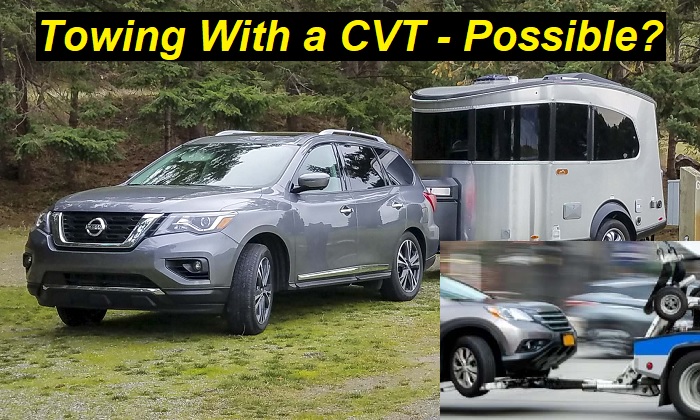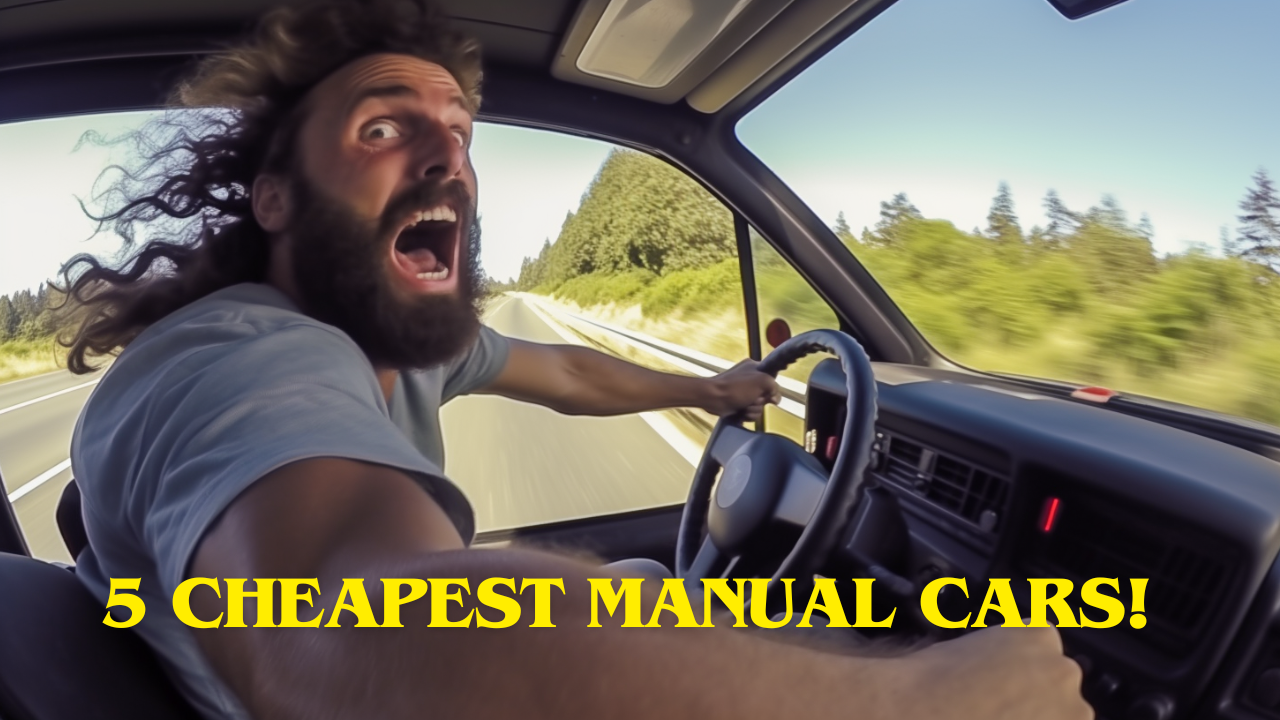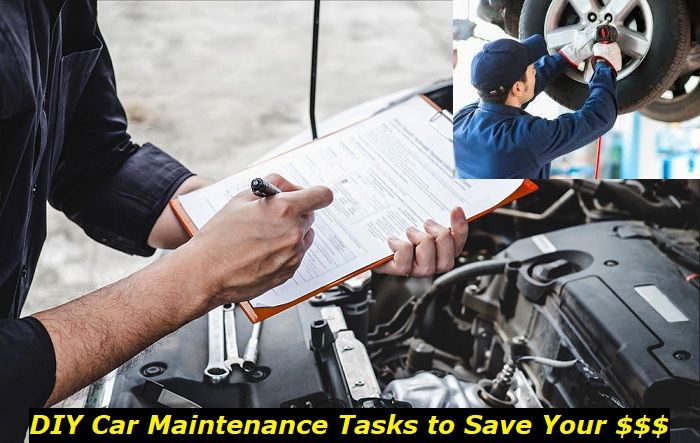You may know that there are some types of automatic transmissions. We can think of at least three popular kinds: a traditional automatic transmission, a CVT, and a dual-clutch transmission. These three types are extremely different in construction, specs, durability, and also many other important factors. You should always know what kind of transmission you have to react properly in different cases.
For example, towing may be a problem. Both ways: when you tow some other car or a trailer, or when your car is towed. Can you tow with CVT transmission? Today we'll try and answer this question to prevent all kinds of problems. Before you tow something or let someone tow your vehicle, make sure you know the simple rules that we'll outline in this article.

Here's what we are going to tell you:
- Towing trailers and other cars with a CVT transmission - possible?
- How to tow a car with a CVT transmission without any danger?
- Towing rules for trailer owners and CVT transmissions.
- What can go wrong and how to repair your transmission?
Let's get started!
Why towing may be a problem for a vehicle with a CVT?
Every transmission is engineered for a certain amount of torque and for a certain wait of a vehicle. Well, most modern transmissions have some margin of safety, so they can tow some trailers. But you have to see the maximum weight of the trailer including some trailers with or without brakes - this is very important.
If you put more weight, you can easily get problems. For example, the transmission may overheat or some parts in your transmission may just break. Replacing these parts and making something to get your transmission back to life will not be that simple.
Towing may be a problem because of these factors:
- the overall weight of the vehicle becomes much bigger and the transmission needs to pull this weight;
- also, the braking load gets much bigger - it means that once you let go the gas pedal, your transmission starts working hard;
- the engine needs more power and torque to tow the trailer, so it will be rotated much faster which will double the load to the transmission;
- it will not create a lot of problems on the highway, but in the city where you need to accelerate and stop all the time, this is a huge problem;
- your CVT isn't designed for towing more than it can, so it can just be broken after a mile or two of such towing.
We've seen a lot of classic CVT vehicles like Nissan Rogue towing big trailers and we always wanted to ask those people how often they go to repair stations or to the dealers. CVT transmissions are not only tender and demanding, but they are also very expensive and hard to repair. Their complicated construction is not the only bad thing.
The problem is that once it's broken, it can need replacement. We know a lot of cases when after towing these transmissions were just thrown away because repairing them was actually more expensive than buying a new transmission. Unfortunately, the price for the new one can start at $4,000 and be up to $8,000 depending on the model and year of your vehicle.
CVT construction and towing dangers
In simple words, a CVT transmission consists of two cones that are connected with a belt. The belt slides along the cones and this ensures the torque conversion. The belt is made of very strong material, but still, it has some limitations of load. Once the load is bigger than allowed, the belt may just break. This will cause a big problem.
Also, the cones may get too hot and the belt will start slipping. It means that you will not be able to use this transmission anymore. An expensive repair will be needed.
You may notice that once you press the gas pedal, the rotations of the engine get high sharply but the vehicle doesn't accelerate that sharp. It means that the transmission slips and you already have some problems. Even when you stop towing, you will still have this problem with the transmission.
Can you tow a car with a CVT?
You can't tow a vehicle that is equipped with a CVT transmission. You can use a special construction that will be put under the front wheels. Also, the all-wheel-drive system should be off at this moment. If the vehicle is rear-wheel drive, you should put this construction under the rear wheels.
Usually, this kind of construction is used in tow trucks. They immobilize the drive wheels of the vehicle and minimize any damage to the transmission when towing. If you have a CVT transmission in your car, this is the only way you can tow something. Otherwise, towing will kill your transmission and you will have to buy a new one.
How do you know the towing capacity of the CVT vehicle?
You can look at the towing capacity in one of the official documents or on the manufacturer's website. If your vehicle is older than 5 years, you better use some independent sources. For example, at Cararac.com you can see the towing capacity of different vehicles and check whether you can tow a big and heavy trailer (spoiler - no, you can't).
The towing capacity gives you an understanding of how much weight you can tow. But pay attention that if you use the full payload and then the full towing capacity weight limit, your vehicle will struggle to survive. Especially, when you will try to get it up the hill or something.
Going up and down the hills - the most dangerous thing
First of all, you need to drive gently. This is one of the most important ways to save your vehicle for a long time. If you don't drive your car gently, you just can't be sure that your car will survive any towing experience. Don't accelerate fast and don't brake sharply when you tow something with your vehicle.
Then, you will also need to remember some important tips:
- don't go too fast because you will not be able to brake very fast;
- limit the speed when cornering, this will shorten the load a little;
- don't ever park on slopes when you have a trailer behind your car;
- before you turn off the engine, ask someone to put blocks under your wheels before stopping the engine;
- use tow mode if you have one - this is a necessary point for modern cars;
- use all-wheel-drive mode when you tow if you have one;
- be very careful when braking - this is the most important part.
When you brake and the trailer starts pushing the car forward, the transmission gets different loads than it's expected to get in this situation. That's why it may get damaged in this situation. Of course, towing I still possible, but it may cause problems.
But the most important thing is to tow only limited weight. Usually, it's not allowed to tow another vehicle behind your CVT car. Because this way the weight of the "trailer" will be too big and the CVT may just die in the middle of your planned journey.
Towing on the highway with a CVT vehicle - any tips?
If you are towing something on the highway, you should limit your speed. Don't go over 70 mph because you may need to brake sharply. Choose a steady speed and take the right side of the road to allow other cars to overtake you easily. If you see a slow car ahead, start preparing for overtaking beforehand. Try not to apply the brake pedal at all. This will allow you to avoid problems with the transmission.
Also, don't change your speed sharply. Gently press the acceleration pedal to save the transmission even if you need to overtake someone. Be careful with stops - remember about some rules with parking your vehicle. You should know about parking on slopes. Never use sport mode when you are towing something. Also, don't use your paddle shifters - let the transmission decide for you.
Once you follow all these rules, towing will not be a hard task for you and your transmission. But we don't recommend towing anything on the highway with a CVT vehicle. If you have a car with a CVT transmission, better avoid towing at all because you will still damage the expensive unit and add problems for the future.
Final words
If you know that you are going to tow a lot of trailers, you shouldn't consider buying a car with a CVT transmission. Even the dual-clutch transmission is safer for towing than the CVT. So, we don't recommend towing heavy trailers with these vehicles. But it's not forbidden to tow with the CVT cars at all - just follow the simple rules and don't forget about the towing capacity of your vehicle.
If you need to tow your CVT vehicle, better call a tow truck. This is the only chance to avoid any damage and problems with your transmission after this towing experience.
About the authors
The CarAraC research team is composed of seasoned auto mechanics and automotive industry professionals, including individuals with advanced degrees and certifications in their field. Our team members boast prestigious credentials, reflecting their extensive knowledge and skills. These qualifications include: IMI: Institute of the Motor Industry, ASE-Certified Master Automobile Technicians; Coventry University, Graduate of MA in Automotive Journalism; Politecnico di Torino, Italy, MS Automotive Engineering; Ss. Cyril and Methodius University in Skopje, Mechanical University in Skopje; TOC Automotive College; DHA Suffa University, Department of Mechanical Engineering






Add comment